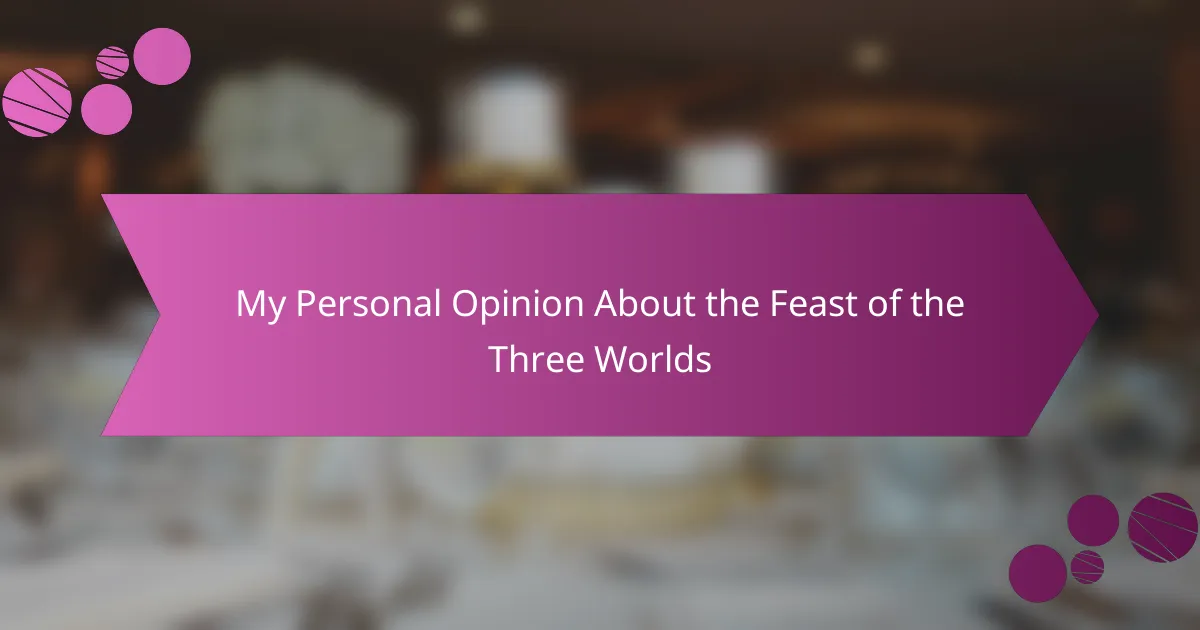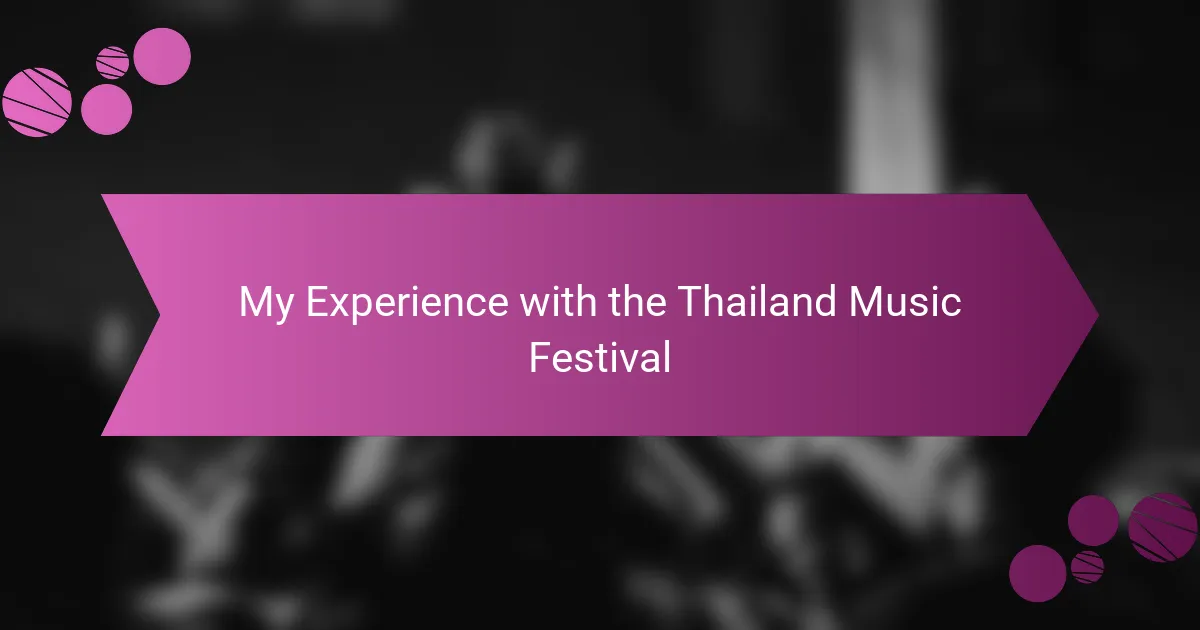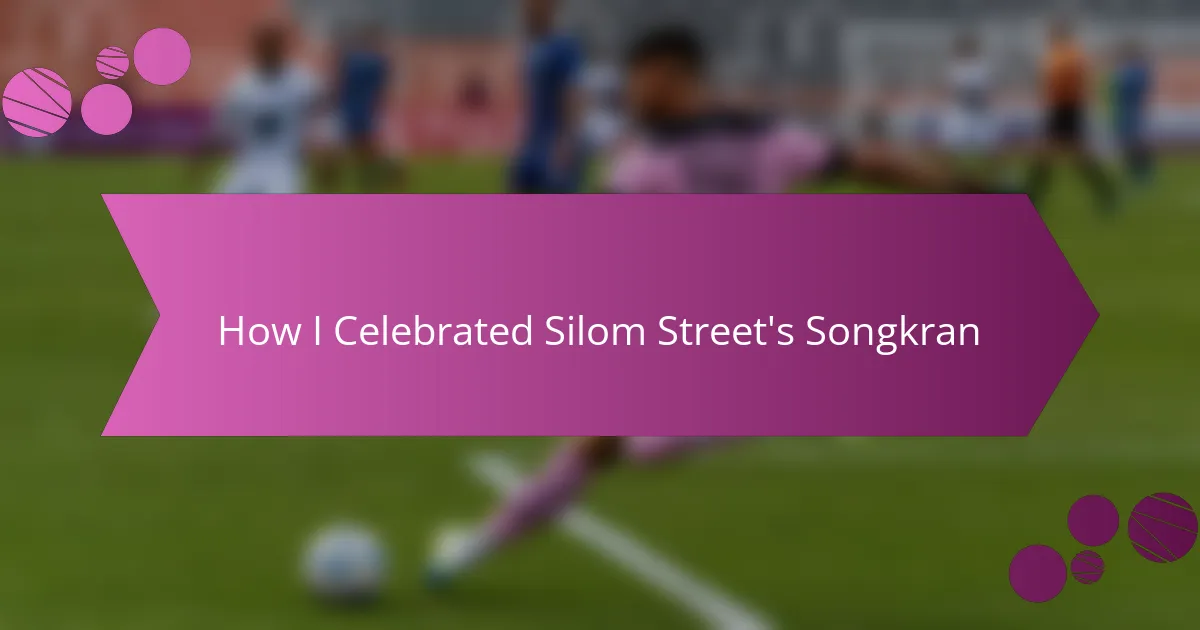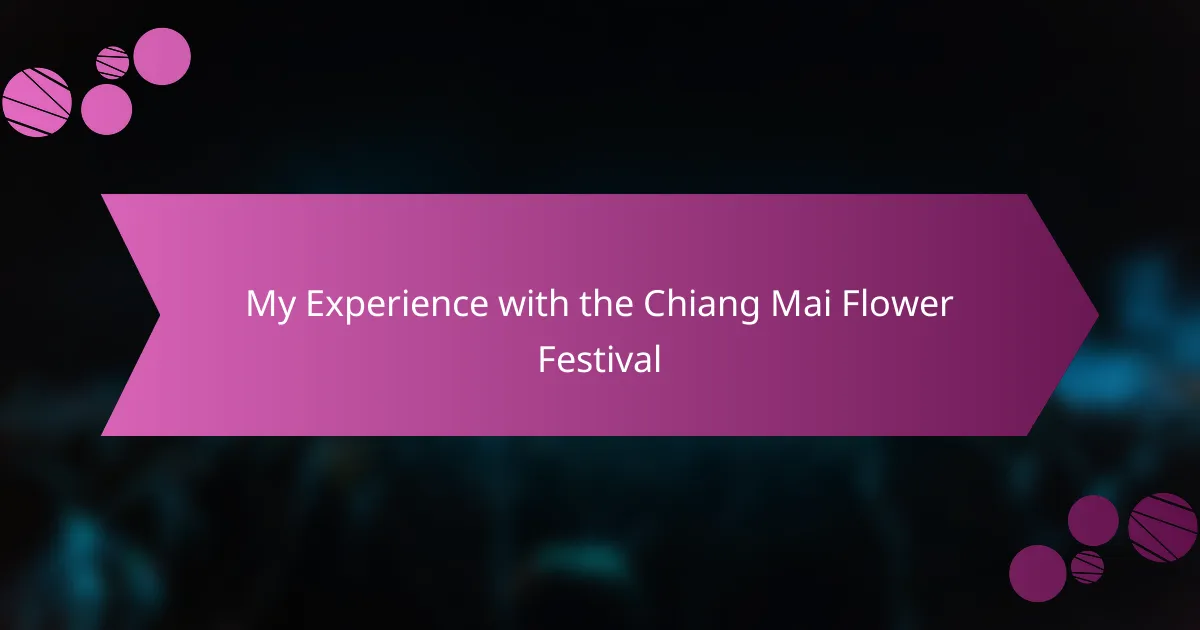Key takeaways
- Thai music festivals blend traditional and contemporary sounds, fostering community connection and celebration of cultural heritage.
- The Feast of the Three Worlds emphasizes cultural identity and spiritual beliefs through community rituals and artistic expressions.
- Traditional music styles, such as Luk Thung and Mor Lam, play a significant role in showcasing Thailand’s rich cultural tapestry.
- The festival nurtures emotional connections, promotes cultural appreciation, and inspires younger generations to embrace their traditions.
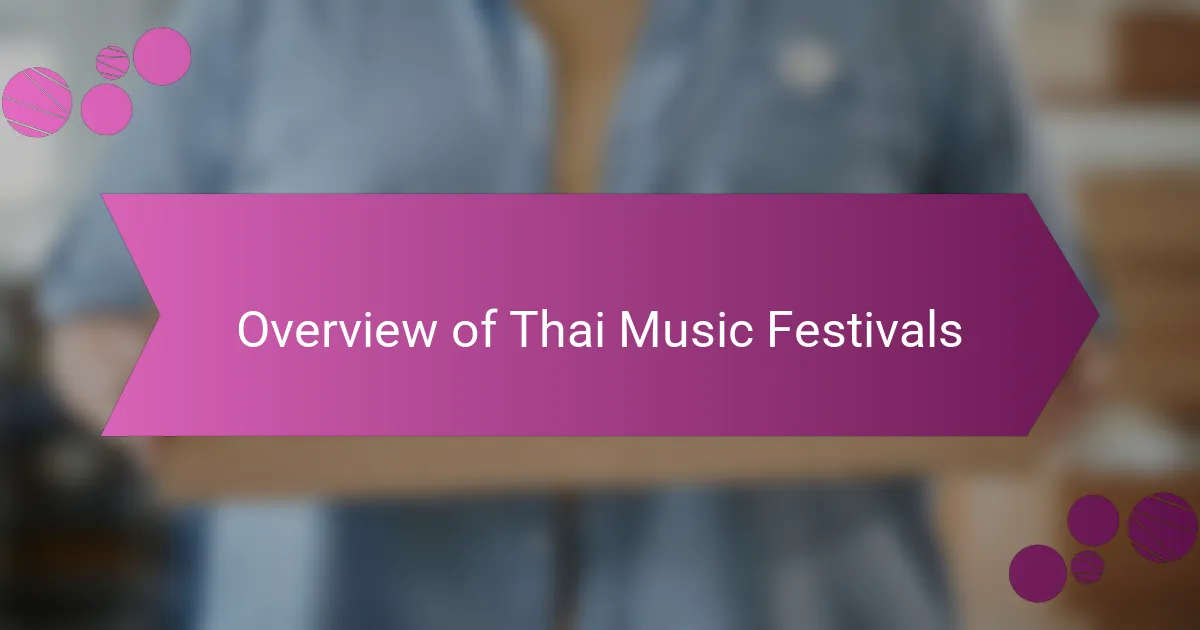
Overview of Thai Music Festivals
Thai music festivals are vibrant expressions of culture that showcase an incredible variety of traditional and contemporary sounds. I remember my first experience at one – the energy was palpable! From live bands to performers on stage, it felt like the entire community was uniting in celebration through music.
What makes these festivals truly special is their ability to blend different genres and art forms. Walking through the crowd, I was captivated by how local artists interact with international musicians, creating a unique soundscape that resonates with everyone. Have you ever felt so connected to a piece of music that it gave you goosebumps? That’s the magic of these events.
From the lively atmosphere to the delicious street food wafting through the air, the experience is a feast for the senses. Each festival has its own charm and vibe, drawing people together in a joyous celebration of rhythm and sound. For me, attending these festivals is not just about the music; it’s about the shared moments and memories that linger long after the last note fades away.
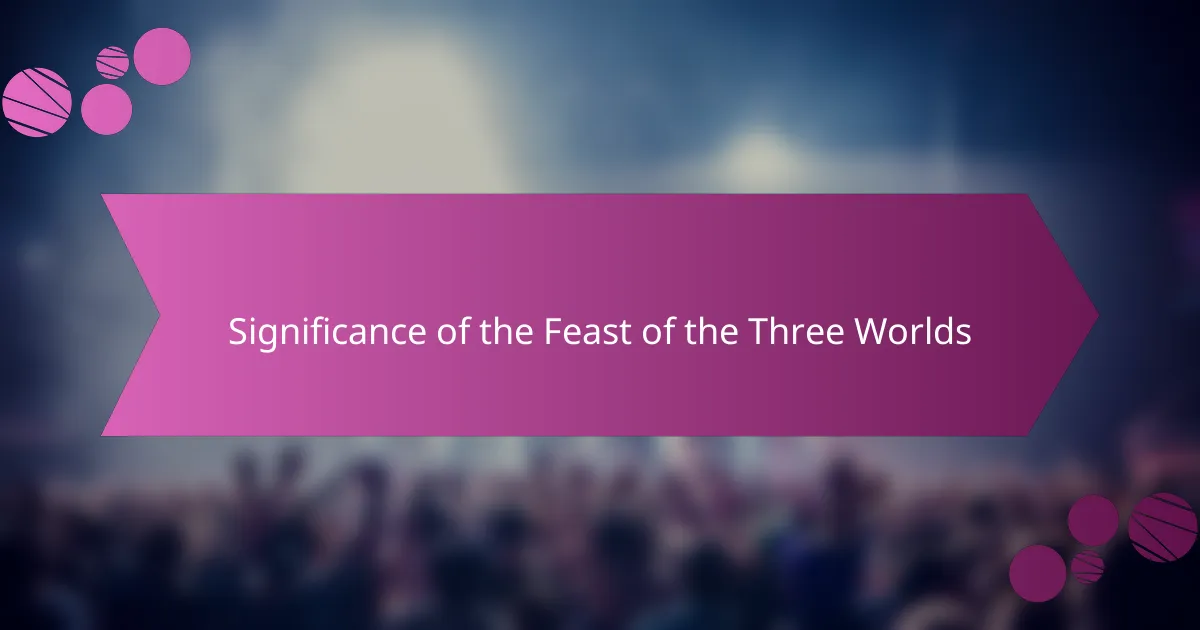
Significance of the Feast of the Three Worlds
The Feast of the Three Worlds serves as a vibrant celebration that deeply resonates with both cultural identity and spiritual beliefs in Thailand. I remember attending the festival for the first time and feeling an overwhelming sense of connection to the historical significance of the event; it beautifully reflects the unity of the physical, spiritual, and metaphysical realms. It’s a time when communities come together to honor their ancestors and seek blessings for the future, creating a profound atmosphere that lingers long after the celebrations.
Here are some key components that highlight the significance of this feast:
- Cultural Heritage: The festival encapsulates the rich traditions and beliefs of Thai culture, preserving the values and teachings passed down through generations.
- Community Bonding: It acts as a catalyst for community engagement, bringing people together to partake in various rituals and celebrations, fostering a sense of belonging.
- Spiritual Connection: Participants express gratitude to their ancestors and the spirits, reinforcing the spiritual dimensions that are central to Thai life.
- Artistic Expression: The festival showcases Thai music and dance, allowing for a celebration of artistic talent while enriching cultural appreciation.
- Emotional Resonance: The sense of joy and reflection brings a communal healing experience that transforms individual lives and the collective spirit of the community.
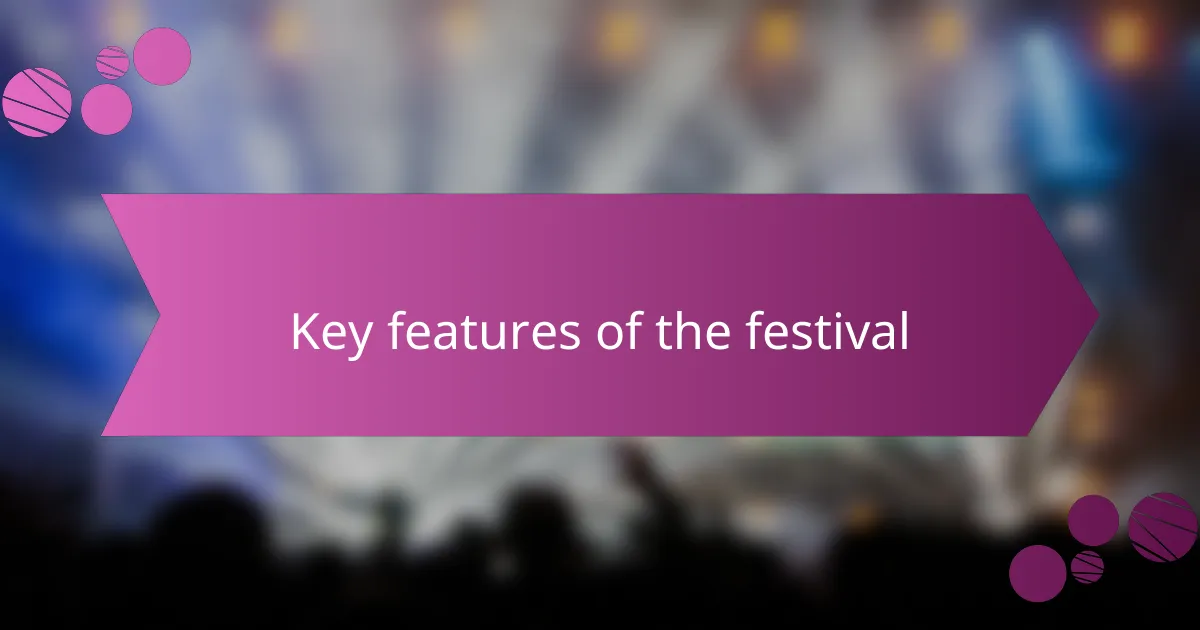
Key Features of the Festival
One of the standout features of the Feast of the Three Worlds is the vibrant musical performances. I remember attending a festival years ago where traditional Thai musicians played alongside contemporary artists. Their ability to blend ancient melodies with modern rhythms created an atmosphere that was both nostalgic and fresh. It truly felt like a celebration of the country’s rich musical heritage.
Another key highlight is the unity fostered among attendees. Everyone from locals to tourists comes together, sharing in the festivities and forging new friendships over a shared love for music. It’s heartwarming to see people dance, sing, and enjoy the art forms that represent a collective cultural identity. This sense of community is palpable and made my experience unforgettable.
- Diverse lineup of artists combining traditional and contemporary music.
- Cultural showcases featuring traditional dance and arts.
- Interactive workshops that invite participation from attendees.
- Food stalls serving authentic Thai cuisine, enhancing the sensory experience.
- Beautifully decorated spaces reflecting Thai cultural symbols, enriching the festival atmosphere.
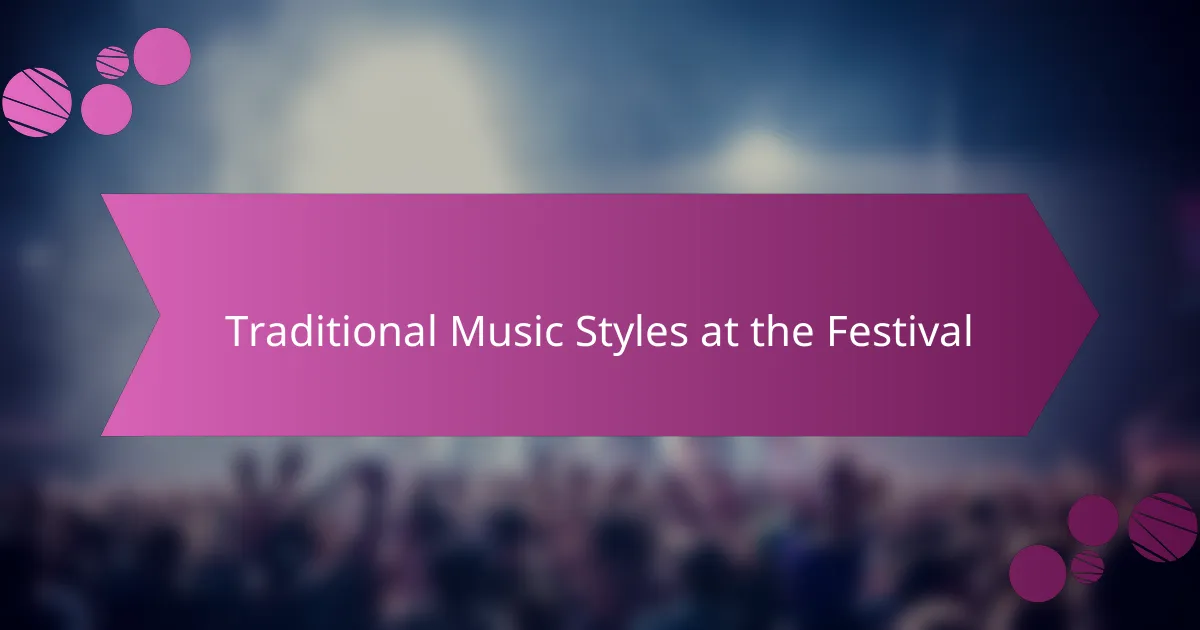
Traditional Music Styles at the Festival
The Feast of the Three Worlds is a vibrant celebration that showcases the rich tapestry of traditional Thai music. I always find myself captivated by the unique styles performed during the festival, from the serene melodies of the khim, a string instrument, to the rhythmic beats of the ranat ek, a xylophone-like instrument. Each performance tells a story, evoking a deep emotional connection to Thailand’s cultural heritage.
One of my most memorable experiences at the festival was listening to a live performance featuring a traditional Thai ensemble. The harmonious blend of instruments created an atmosphere that felt both sacred and festive. The joy in the audience was palpable, as we were all transported back to a time where music played a central role in everyday life. Here are some traditional music styles that you can expect to hear at the festival:
- Luk Thung: A modern folk style that often reflects rural life and social issues.
- Mor Lam: A traditional style from Northeast Thailand, characterized by its poetic lyrics and distinctive vocal techniques.
- Khon Dance Music: Accompanies the traditional masked drama, enhancing the storytelling experience.
- Pin Peat Ensemble: Common in Buddhist ceremonies, featuring percussive instruments that create a serene ambiance.
- Sangha Music: Associated with monastic chants and rituals, reinforcing the spiritual aspect of Thai culture.
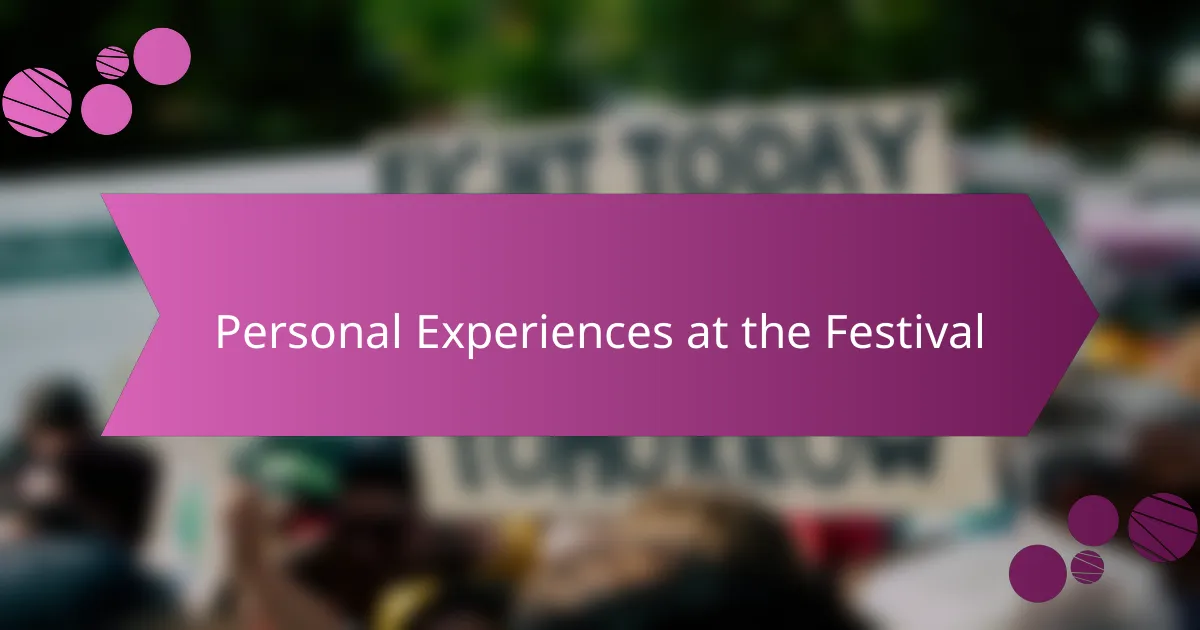
Personal Experiences at the Festival
The Feast of the Three Worlds is an unforgettable experience for anyone who appreciates Thai culture and music. I remember walking through the vibrant stalls, each one teeming with hand-crafted souvenirs, aromatic street food, and of course, the rhythmic sounds of traditional musicians. There was a moment when a particular performance moved me to tears; it beautifully captured the essence of Thailand’s rich heritage.
Each year, I find that my connection to the festival deepens. Engaging with local artists and listening to their stories creates a warmth that lingers long after the event is over. I believe this festival isn’t just about music; it’s about community and celebrating our shared history.
| Aspect | My Experience |
|---|---|
| Atmosphere | Vibrant and lively, filled with the sound of laughter and music. |
| Food | Delicious street food that offers a taste of authentic Thai flavors. |
| Music | A blend of traditional and contemporary styles that resonates with everyone. |
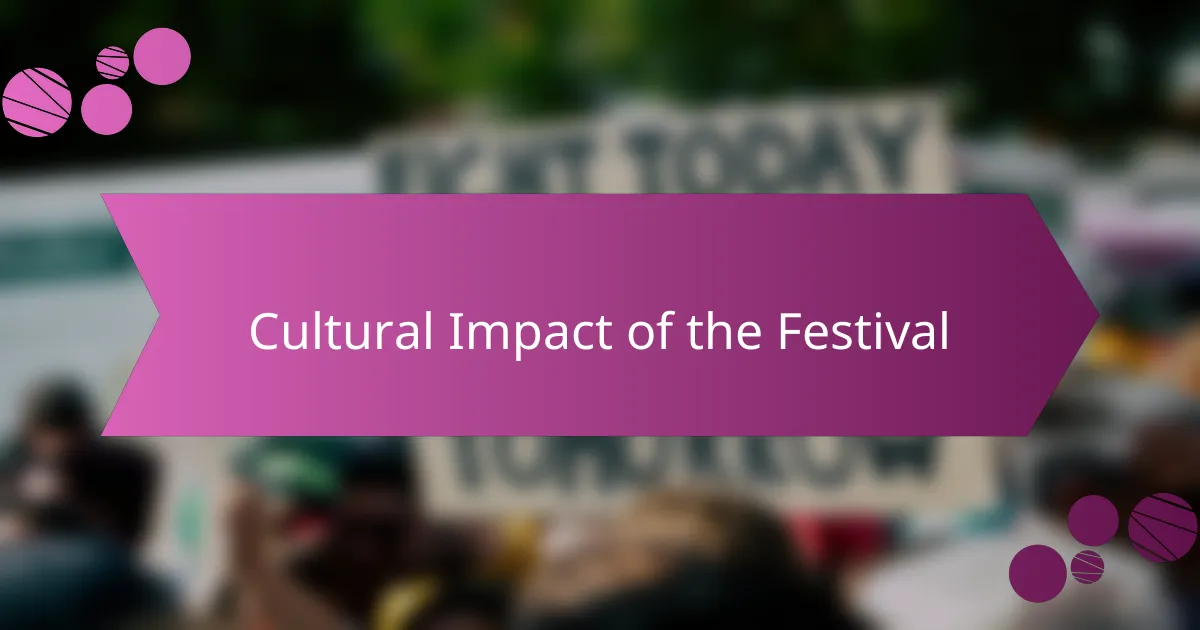
Cultural Impact of the Festival
The Feast of the Three Worlds not only showcases the beauty of Thai music but also acts as a vibrant cultural tapestry that weaves together various traditions. I remember attending the festival for the first time and being swept away by the mingling of sounds, sights, and flavors that showcased Thailand’s rich heritage. It was a powerful reminder of how festivals can bond communities, creating a space where history and modernity coexist harmoniously.
In many ways, this festival serves as a reflection of Thailand’s identity, bringing people together to celebrate shared values and beliefs. I always find it touching to see families gather, children dancing alongside their grandparents, all while enjoying the various performances. The emotional connections made during these celebrations are profound, as they nurture a sense of belonging and pride in one’s culture.
- Promotes understanding and appreciation of diverse Thai traditions.
- Fosters community bonds through a shared cultural experience.
- Inspires younger generations to engage with their cultural heritage.
- Provides a platform for local artists to showcase their talents.
- Enhances tourism, bringing global awareness to Thai culture.
